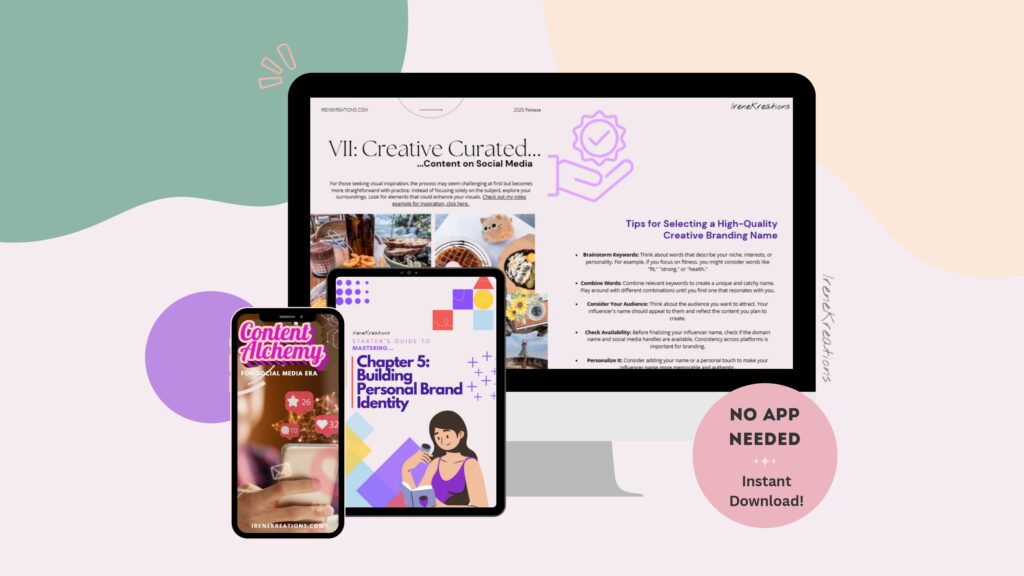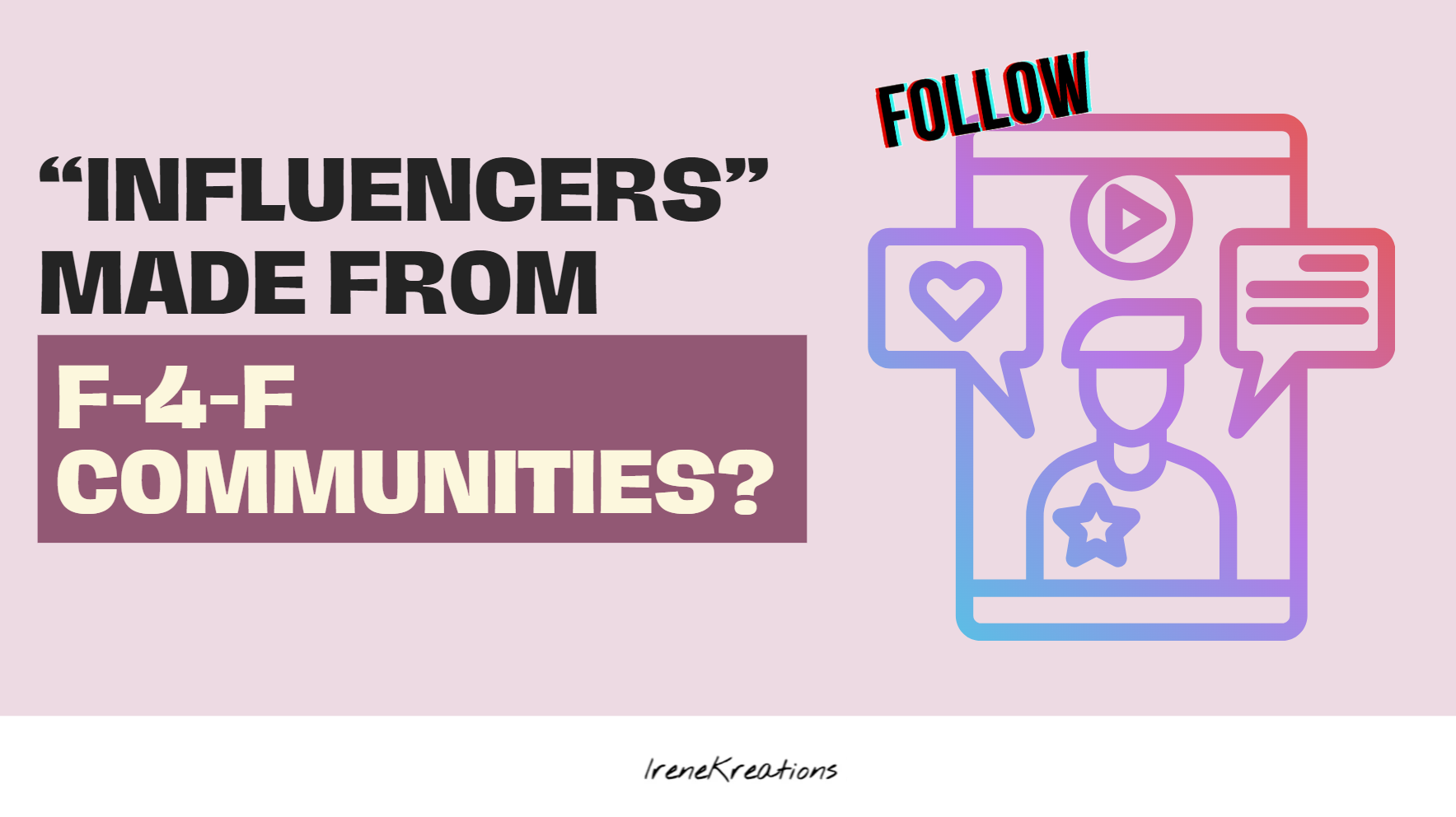The Good and Bad of Follow-for-Follow Communities: Why You Should Think Twice Before Participating
While it’s not often discussed, as a seasoned content creator, you’ve likely encountered or tried follow-for-follow. The concept is simple: you gain one follower by following someone else, often leading to hundreds or thousands of mutual followers. Some compare it to buying followers—requiring effort instead of money—while others see it as a fair way to build a community. For those unfamiliar, this article will explain follow-for-follow in detail, explore its pros and cons, and why you should think twice before participating.
While gaining followers can be both a blessing and a curse, maintaining it can be an ongoing challenge that requires consistent effort, engagement, and authenticity. The allure of rapidly growing your follower count through “follow-for-follow” communities is tempting. These communities promise a quick way to build your audience, but is it worth it? Let’s explore the good and bad of follow-for-follow strategies, why they might not be the best approach, and how you can use them wisely without ending up with a sea of non-genuine followers.
The Appeal: Why Follow-for-Follow is So Tempting
- Rapid Growth: One of the most appealing aspects of follow-for-follow communities is the promise of rapid follower growth. It’s a guaranteed follow-back approach. Unlike buying followers, which often results in rapid drops and the need to continually purchase more to maintain your count, follow-for-follow promises that as long as you keep following others, they will continue to follow you in return.
- Psychological Validation: A growing follower count can feel rewarding. It gives the impression that your content is being noticed, which can be a powerful motivator for content creators, especially those just starting. While even you paid for ads, it may promise some visibility, but it doesn’t always guarantee the attention or engagement you’re hoping for.
- Social Proof: In the digital world, numbers often equate to credibility. A larger follower count can attract more organic followers, as people tend to trust and follow accounts with more substantial audiences.
The Downside: Why Follow-for-Follow Can Be Harmful
- Lack of Engagement: The biggest drawback of follow-for-follow communities is the lack of genuine engagement. Many followers gained through this method are not genuinely interested in your content. They follow you because they want a follow back, not because they find value in what you share. This results in low engagement rates, which can harm your visibility on platforms that prioritize engagement, such as Instagram.
- Inauthentic Community: A follow-for-follow strategy can lead to an inauthentic community. Your follower count may grow, but if your audience isn’t truly interested in your content, you’re essentially building a following of “fake” or disinterested accounts. This can be discouraging when you post content and see minimal interaction.
- Algorithmic Penalties: Social media algorithms prioritize content that resonates with users. If your posts receive low engagement because your followers aren’t genuinely interested, the algorithm may limit your content’s reach. This can result in fewer people seeing your posts, even those who might genuinely be interested.
- Time-Consuming: Following others just to gain followers in return can be time-consuming and inefficient. You may spend hours following accounts, only to find that many unfollow you shortly after, leaving you with little to show for your efforts.
A Better Approach: Using Follow-for-Follow as a Strategy
While follow-for-follow has its drawbacks, it can be used strategically if approached correctly. Here’s how:
- Targeted Following: Instead of following random accounts, focus on those within your niche or industry. This increases the likelihood that they’ll be interested in your content and remain engaged over time. Look for accounts that share similar interests, values, or audiences.
- Build Relationships: Use follow-for-follow as a starting point to build genuine relationships. Engage with the content of those you follow by liking, commenting, and sharing. This can foster mutual respect and encourage more meaningful interactions.
- Quality Over Quantity: Remember, a smaller, engaged following is far more valuable than a large, inactive one. Focus on creating high-quality content that resonates with your target audience, and let organic growth happen naturally. Over time, you’ll attract followers who truly appreciate your work.
In short, what is ‘Follow, Unfollow’?
It’s straightforward:
-Follow a number of people.
-A percentage will follow you back.
-After a while, unfollow those who didn’t follow you.
-Repeat the process.
If you’re on a tight budget but have time to spare, this method can work well—even spending just 5 minutes a day can yield results. However, there are valid concerns about its drawbacks:
-It often appears spammy.
-It can overshadow the importance of quality content.
-Excessive use may lead to account suspension.
-It tends to generate less genuine engagement.
Despite these issues, with careful management, ‘Follow, Unfollow’ can still be effective, especially for new social media accounts looking to gain traction quickly.
It only works on certain networks
If you try the ‘Follow, Follow Back’ method on YouTube or Facebook, you might be disappointed, as their systems aren’t really designed for this approach.

However, it works only on:
-X/Twitter
-Instagram
-Pinterest (to some extent—focus on repins)
-Lemon8
-Tik Tok
These platforms are more conducive to this method because users are notified when you follow them, and the ‘Follow’ button encourages reciprocity.
Still, don’t expect a 100% follow-back rate—this method is not a foolproof solution. You’ll likely get only a percentage of follows back, so be prepared to unfollow people eventually to avoid overloading your account and risking suspension.
Should I join F-4-F to grow my Followers?
If you’re under 300 followers and want to take it to the next level while already creating quality content, you might consider trying follow-for-follow. It’s not entirely ethical, so be honest with any brands you work with. Trying it once can be okay, but don’t make it a habit. Instagram is more saturated now, making growth harder than it was 8-10 years ago. While others may use this approach, leaving you with low numbers can make your account feel abandoned. Give it a try if you want, but avoid getting addicted to it.
This method isn’t a sustainable long-term strategy—it’s more of a starting point.
Use it to get your first 1,000 followers, then shift your focus to creating engaging content that sparks interaction. Leverage the viral nature of social media, comments, and shares to promote your work organically.
Once you’ve built up your initial 1,000 or 2,000 followers, you’ll have a solid base for interaction that the algorithm will recognize.
In the meantime, educate yourself on effective techniques such as collaboration tagging, using hashtags, and using firehooks, and content storyline to generate positive attention and further boost your presence.
Ultimately, it’s up to you! While it’s not a perfect method and certainly not the best option out there, it can be a decent way to start You can give it a try and see if it works for you, or you might opt for paid ads or other methods to reach a wider audience.

Strategise the Concept, don’t just pour yourself into “growing” from ingenuine followers
Are you using follow-for-follow communities strategically? Or do you believe it’s the only way to grow your followers? If you’ve joined 1,000 follow-for-follow groups and only have 1,000 followers, it’s time to think beyond this approach. To truly grow and keep your Instagram algorithm healthy, you need to outgrow the base you’ve built from follow-for-follow. Otherwise, your reach will stagnate, hindering your growth.
Conclusion: Think Before You Try
The follow-for-follow strategy can be tempting for those looking to quickly boost their follower count, but it’s not without its pitfalls. While it can offer a quick boost in numbers, the quality of those followers is often low, leading to reduced engagement and potential algorithmic penalties.
Instead of relying solely on follow-for-follow tactics, consider using it as a strategic thinking within a broader, more authentic growth strategy. Focus on building genuine relationships, creating valuable content, and attracting followers who truly appreciate your work. In the end, a smaller, engaged community will always be more beneficial than a large, inactive one.
✧⭒✦✧⭒✦◇ Ready to Level Up Your Socials? ✦⭒✧✦⭒✧
Still struggling with messy marketing or feel lost on social media? It’s time to change that. Dive into IreneKreations’ Recommended Social Marketing E-Books — a curated library filled with FREE and premium guides crafted for business owners who want real, lasting results.

From social media to content strategy and branding, these resources are your shortcut to making marketing finally make sense (and work).
Instant access. Powerful strategies. Business-ready results.
Join IreneKreations Telegram Channel for More FREE Social Content Tips here








